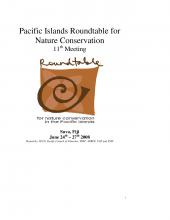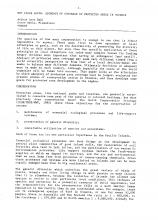Post-Tsunami assessment of Zinoa marine conservation area, South Choiseul, Solomon Islands

Biodiversity Conservation
Available Online
Hamilton Richard, Ramohia Peter, Hughes Alec, Siota Catherine, etc
2007
The waters surrounding Choiseul contain some of the highest diversities of coral and reef fish in the world, with the 2004 Solomon Island Marine Assessment showing that the Solomon Islands are part of the global centre for marine diversity known as the Coral Triangle. Other countries that make up the Coral Triangle are Indonesia, Philippines, parts of Malaysia, East Timor and Papua New Guinea. Since 2004 The Nature Conservancy (TNC), the Lauru Land Conference of Tribal Community (LLCTC) and Choiseul provincial fisheries have assisted five local communities around Choiseul in their efforts to establish Marine Conservation Areas (MCA) on their traditional reefs. The first MCA to be established was the Zinoa MCA. Zinoa is located on the south-west side of Choiseul in the Solomon Islands. The Zinoa MCA was established by traditional leaders in November 2004, covering 150 hectares and consisting of two islands and associated reefs that occur approximately one kilometre offshore from Voza village on the Choiseul mainland. The reefs around Zinoa Islands are representative of this region of the South coast of Choiseul. In early 2005 sea cucumbers, trochus and giant clams around Zinoa Islands were reported by traditional reef owners to be only a tiny fraction of their former abundance and food fish populations were also reported to be in decline.








